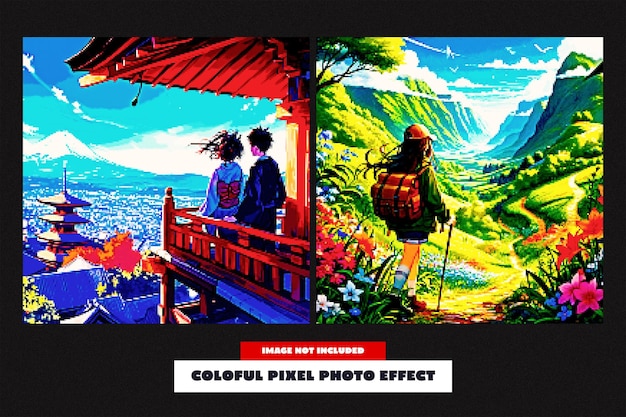The Art of the Poster: International Film Marketing for US Audiences

The art of the poster plays a crucial role in visually marketing international films to US audiences, acting as a cultural bridge that can either attract or repel viewers based on its design and messaging.
The Art of the Poster: Analyzing the Visual Marketing of International Films for US Audiences reveals how film posters serve as a pivotal first impression, navigating cultural nuances to captivate American moviegoers.
The Power of First Impressions: Film Posters as Cultural Ambassadors
Film posters are often the first point of contact for audiences with a film, particularly when it comes to international cinema. They act as crucial cultural ambassadors, setting the tone and expectations for what the film has to offer.
Understanding the nuances of visual communication is key in attracting US audiences to films from different countries and cultures. A well-designed poster can overcome language barriers and cultural differences, sparking interest and driving ticket sales.
Translating Visual Language
The challenge lies in effectively translating the visual language of a film, originally intended for a specific cultural context, into a universal message that resonates with a US audience. This often requires careful consideration of color palettes, imagery, and typography.
Different cultures associate different meanings with certain colors and symbols. What might be a positive image in one country could be perceived negatively in another. Therefore, adaptation and localization are important aspects of international film marketing.
- Understanding US audience preferences for film genres and visual styles.
- Adapting poster designs to align with American cultural values and sensitivities.
- Utilizing familiar tropes and imagery to create a sense of connection.
- Balancing originality with accessibility in the visual presentation.

The success of a film poster hinges on how well it navigates the complexities of cross-cultural communication. By understanding the target audience and adapting the visual elements accordingly, marketers can craft posters that intrigue, entice, and ultimately, drive viewers to experience the magic of international cinema.
Decoding Visual Cues: Semiotics in International Film Posters
Semiotics, the study of signs and symbols, provides a valuable framework for understanding how film posters communicate meaning to audiences. By analyzing the visual cues embedded in a poster’s design, we can gain insights into how it attempts to resonate with viewers.
In the context of international film marketing, semiotics helps us unpack the cultural codes that inform the poster’s message. Understanding these codes is essential for creating posters that are both visually appealing and culturally appropriate for US audiences.
Color Psychology and Cultural Significance
Colors evoke different emotions and associations depending on the cultural context. For example, red might symbolize passion and excitement in the West, while in some Asian cultures, it represents luck and prosperity. Understanding these nuances is key to choosing the right color palette.
Lighting also plays a significant role. A dark and moody poster might be appropriate for a thriller, while a brightly lit and vibrant poster is better suited for a comedy or family film. The choice of lighting should align with the film’s genre and target audience.
Typography and Cultural Identity
The typeface used in a film poster can also communicate important information about the film’s origin and genre. A stylized, calligraphic font might evoke a sense of tradition and artistry, while a modern, sans-serif font might suggest a more contemporary and edgy film.
- Analyzing the use of colors to evoke specific emotions and associations.
- Understanding the cultural significance of different symbols and imagery.
- Examining the role of typography in conveying the film’s genre and origin.
- Assessing the poster’s overall visual composition and its impact on the viewer.
Ultimately, the semiotics of a film poster is a complex interplay of visual elements that work together to create a cohesive and compelling message. By carefully considering these elements, marketers can craft posters that effectively communicate the essence of the film to US audiences, regardless of its origin or cultural context.
Genre Conventions and Audience Expectations
US audiences have come to expect certain visual cues when it comes to specific film genres. These conventions are often deeply ingrained in the collective consciousness, shaping expectations and influencing viewing choices.
When marketing international films, it’s crucial to be aware of these genre conventions and adapt the poster designs accordingly. Failing to meet these expectations can lead to confusion and disinterest among potential viewers.
The Thriller Genre
Thrillers often feature dark and ominous imagery, with a focus on suspense and intrigue. Posters might include shadowy figures, dramatic lighting, and unsettling color palettes to create a sense of unease.
The use of sharp angles and asymmetrical compositions can further enhance the feeling of tension and uncertainty, drawing viewers into the film’s narrative.

Romance and Comedy Conventions
Romances, on the other hand, typically employ softer, more romantic imagery. Posters might feature close-ups of the lead actors, bathed in warm, inviting light, or depict idyllic landscapes that evoke a sense of love and happiness.
Comedies often utilize bright, vibrant colors and playful imagery to convey a sense of fun and lightheartedness. Posters might include humorous characters, exaggerated expressions, and quirky visual elements that signal the film’s comedic tone.
- Identifying the key visual conventions associated with different film genres.
- Adapting international film posters to meet US audience expectations.
- Avoiding genre misrepresentation that can lead to confusion and disinterest.
- Finding a balance between originality and adherence to established norms.
By carefully considering genre conventions and audience expectations, marketers can craft posters that resonate with US viewers and effectively communicate the essence of the film’s narrative. This requires a deep understanding of the cultural context and a willingness to adapt the visual language to suit the tastes and preferences of the target audience.
Case Studies: Successful International Film Poster Campaigns in the US
Analyzing successful international film poster campaigns in the US can provide valuable insights into what works and what doesn’t when it comes to cross-cultural marketing. By examining specific examples, we can identify key strategies that have resonated with American audiences.
These case studies highlight the importance of understanding cultural nuances, adapting visual elements, and crafting compelling narratives that appeal to US viewers.
“Parasite”: A Masterclass in Visual Storytelling
The poster campaign for the South Korean film “Parasite” is a prime example of effective international film marketing. The posters cleverly hinted at the film’s themes of class conflict and social inequality without giving away too much of the plot.
The use of contrasting imagery, such as the opulent home of the wealthy Park family juxtaposed with the cramped basement dwelling of the Kim family, effectively conveyed the film’s central themes and sparked curiosity among US audiences.
“Amélie”: Embracing French Charm
The French film “Amélie” achieved widespread success in the US thanks in part to its charming and whimsical poster campaign. The posters captured the film’s unique visual style and quirky humor, appealing to audiences who were looking for something different from mainstream Hollywood fare.
The use of bright colors, playful typography, and surreal imagery created a sense of enchantment and drew viewers into Amélie’s whimsical world.
- Examining the poster campaign for “Parasite” and its clever use of visual storytelling.
- Analyzing the success of “Amélie” and its ability to capture French charm.
- Identifying key strategies that have resonated with US audiences.
- Learning from both successes and failures in international film marketing.
Success in international film marketing often requires a delicate balance between respecting the film’s original cultural context and adapting its visual language to suit the tastes and preferences of US audiences. By studying successful case studies, marketers can gain a better understanding of how to navigate these challenges and craft posters that resonate with viewers, regardless of their cultural background.
The Role of Social Media in Amplifying Poster Campaigns
In today’s digital age, social media plays a crucial role in amplifying film poster campaigns and reaching a wider audience. Platforms like Instagram, Twitter, and Facebook provide opportunities to share eye-catching visuals, engage with fans, and generate buzz around upcoming releases.
Creating Shareable Content
Film marketers can leverage social media to create shareable content that promotes the film’s poster and its overall message. This might involve creating animated posters, short video clips, or interactive quizzes that encourage engagement and generate excitement.
Running contests and giveaways can also be effective in attracting attention and generating buzz. Offering prizes like signed posters, movie tickets, or exclusive merchandise can incentivize fans to share the poster and spread the word about the film.
- Leveraging social media to create shareable content that promotes film posters.
- Engaging with fans and generating buzz around upcoming releases.
- Using platforms like Instagram, Twitter, and Facebook to reach a wider audience.
- Measuring the impact of social media campaigns on ticket sales and brand awareness.
Social media has become an indispensable tool for film marketers looking to promote international films to US audiences. By creating engaging content, fostering online communities, and leveraging the power of social sharing, marketers can amplify the reach of their poster campaigns and connect with viewers on a deeper level, thereby increasing the likelihood that they will see the film in cinema.
Future Trends in International Film Poster Design
As technology continues to evolve, the future of international film poster design is likely to be shaped by new trends and innovations. From augmented reality posters to personalized marketing campaigns, the possibilities are endless.
Staying ahead of the curve and embracing these new trends will be essential for film marketers looking to capture the attention of US audiences in an increasingly crowded marketplace.
Augmented Reality and Interactive Posters
Augmented reality (AR) technology can bring film posters to life, allowing viewers to interact with the visuals in new and exciting ways. By scanning a poster with their smartphone or tablet, viewers might be able to watch a trailer, access exclusive content, or even play a mini-game related to the film.
Interactive posters can also incorporate touch-sensitive screens and motion sensors, creating a more immersive and engaging experience for viewers.
Personalized Marketing Campaigns
Data analytics and machine learning can be used to create personalized marketing campaigns that target specific audience segments with customized poster designs and messaging. By understanding the preferences and interests of individual viewers, marketers can craft posters that are more relevant and appealing.
This might involve using different color palettes, typography styles, or even showcasing different characters in the poster, depending on the viewer’s profile.
- Exploring the potential of augmented reality (AR) and interactive posters.
- Utilizing data analytics and machine learning to create personalized marketing campaigns.
- Embracing new technologies and design trends to capture audience attention.
- Adapting to the evolving landscape of international film marketing.
The future of international film poster design is bright, with new technologies and creative approaches emerging all the time. By embracing these advancements and staying attuned to audience preferences, film marketers can continue to craft posters that captivate, intrigue, and ultimately, drive viewers to experience the magic of international cinema on the big screen.
| Key Point | Brief Description |
|---|---|
| 🎨 Visual Communication | Posters act as a key visual introduction for international films. |
| 🎭 Genre Conventions | Adapting poster designs to meet US audience expectations by understanding genre norms. |
| 📱 Social Media | Leveraging social media to amplify the reach and engagement of poster campaigns. |
| 🔮 Future Trends | Exploring emerging technologies like AR and personalized marketing in poster design. |
Frequently Asked Questions
▼
Film posters are crucial as they provide the first visual impression, bridging cultural gaps and attracting diverse US audiences to international cinema. A compelling poster can pique interest and drive ticket sales.
▼
Cultural nuances impact color choices, imagery, and typography. What resonates positively in one culture may not in another, necessitating adaptation and localization to align with US cultural values and preferences.
▼
Semiotics helps decode visual cues and cultural codes, ensuring the poster communicates effectively. Understanding these symbols is crucial for creating posters that are both visually appealing and culturally appropriate.
▼
Social media shares visuals, engages fans, and generates buzz. Animated posters, video clips, and interactive content boost engagement. Contests and giveaways attract attention and incentivize sharing, expanding the campaign’s reach.
▼
Future trends include augmented reality (AR) posters and personalized marketing campaigns. AR brings posters to life with interactive content, while personalized campaigns use data to customize visuals and messaging for specific audiences.
Conclusion
In conclusion, the art of the poster: analyzing the visual marketing of international films for us audiences is a complex and multifaceted endeavor. It requires a deep understanding of cultural nuances, audience expectations, and the power of visual communication. By carefully considering these factors, film marketers can craft posters that not only capture the essence of the film but also resonate with US viewers, driving ticket sales and fostering a greater appreciation for international cinema.





